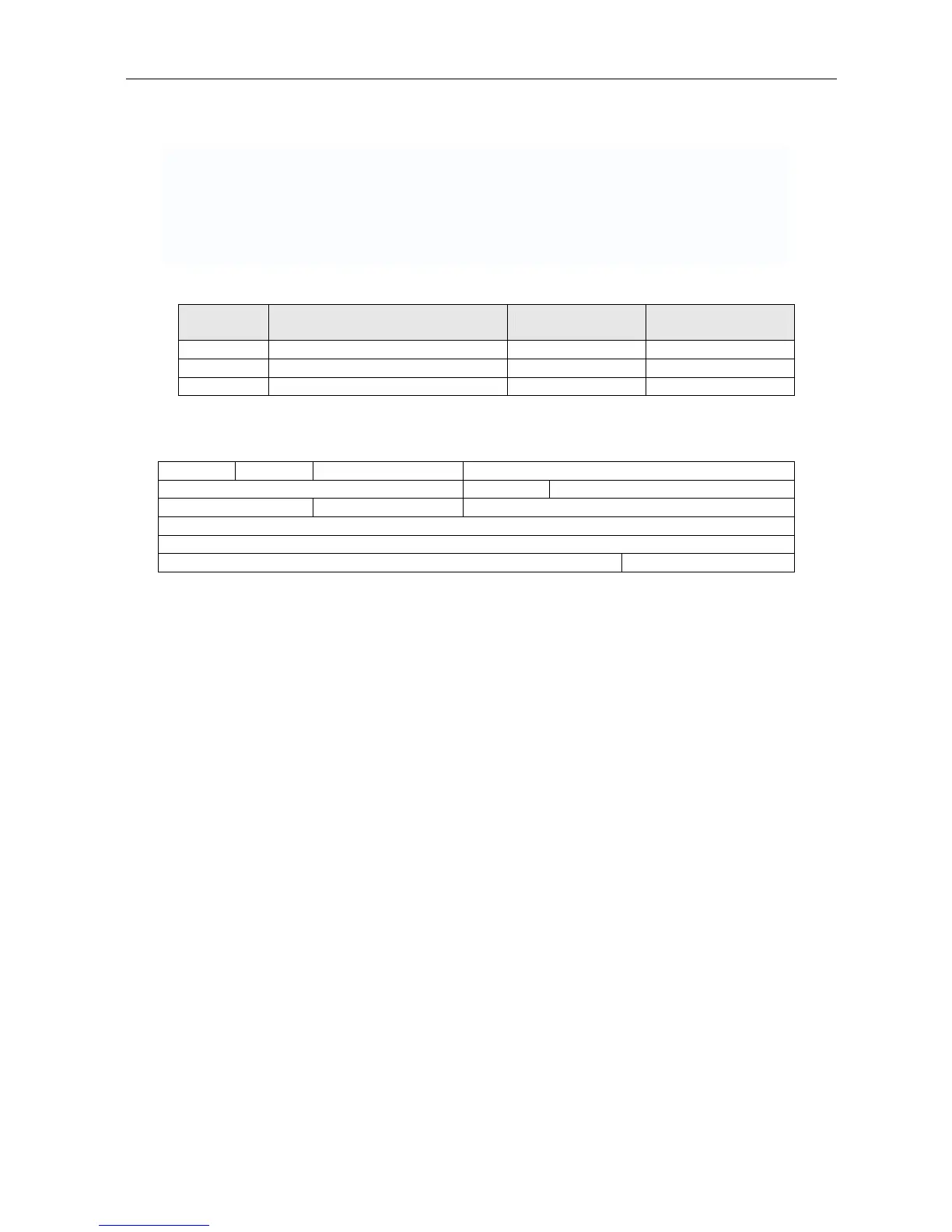Appendix 4. Abbreviations
AP4-8
IP Address
IP addresses can be categorized into global IP addresses and private IP addresses.
Global IP addresses (which are collectively managed by ICANN) are used by those
hosts directly connected to the Internet.
Private IP addresses are used for the address within a private network that cannot be
used by external parties such as company internal LAN.
The following address spaces are reserved for private IP addresses.
Class Range Subnet mask
Number of
addresses
Class A 10.0.0.0 - 10.255.255.255 255.0.0.0 16,777,216
Class B 172.16.0.0 - 172.31.255.255 255.240.0.0 2,097,152
Class C 192.168.0.0 - 192.168.255.255 255.255.0.0 65,536
The IP Header Format is as described below;
0 4 8 16 24 31
Version IHL TOS/DSCP/ECN Total Length
Identification Flags Fragment Offset
Time to Level Protocol Header checksum
Source Address
Destination Address
Options Padding
Version
4 bit; the IP protocol version of which the IP packet consists.
Header Length
4 bit; the length of the IP header itself is expressed by considering 32 bits as the unit.
TOS/DSCP/ECN
8 bit; service type field.
It represents the features of the service requested by the IP packet. The router refers
to this field, and forwards the packets in a manner so that the priorities and the
requested delays would be realized.
Identification
16 bit; it has the ID numbers allocated by the sending host stored for the purpose of
identifying each individual packet.
Flag
3 bit; it is the value which represents the method of delivery.
Fragment Offset
13 bit; it represents the position of the IP packet for when the IP packet is fragmented
by showing which number of fragment the IP packet is contained in.
Time To Live
8 bit; it shows the maximum period for the IP packet being alive upon the Internet. It
is set for the purpose of preventing from having an IP packet with an unknown
address circulating within the network forever.

